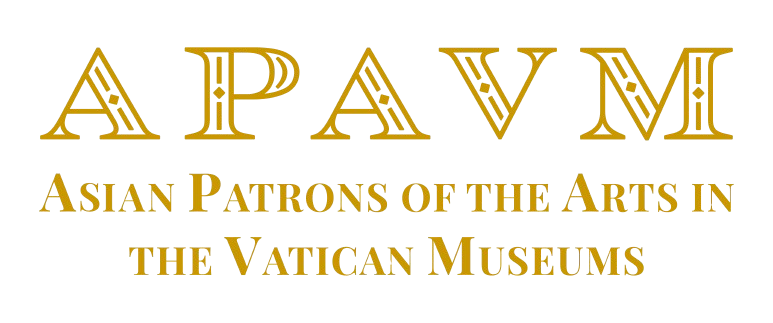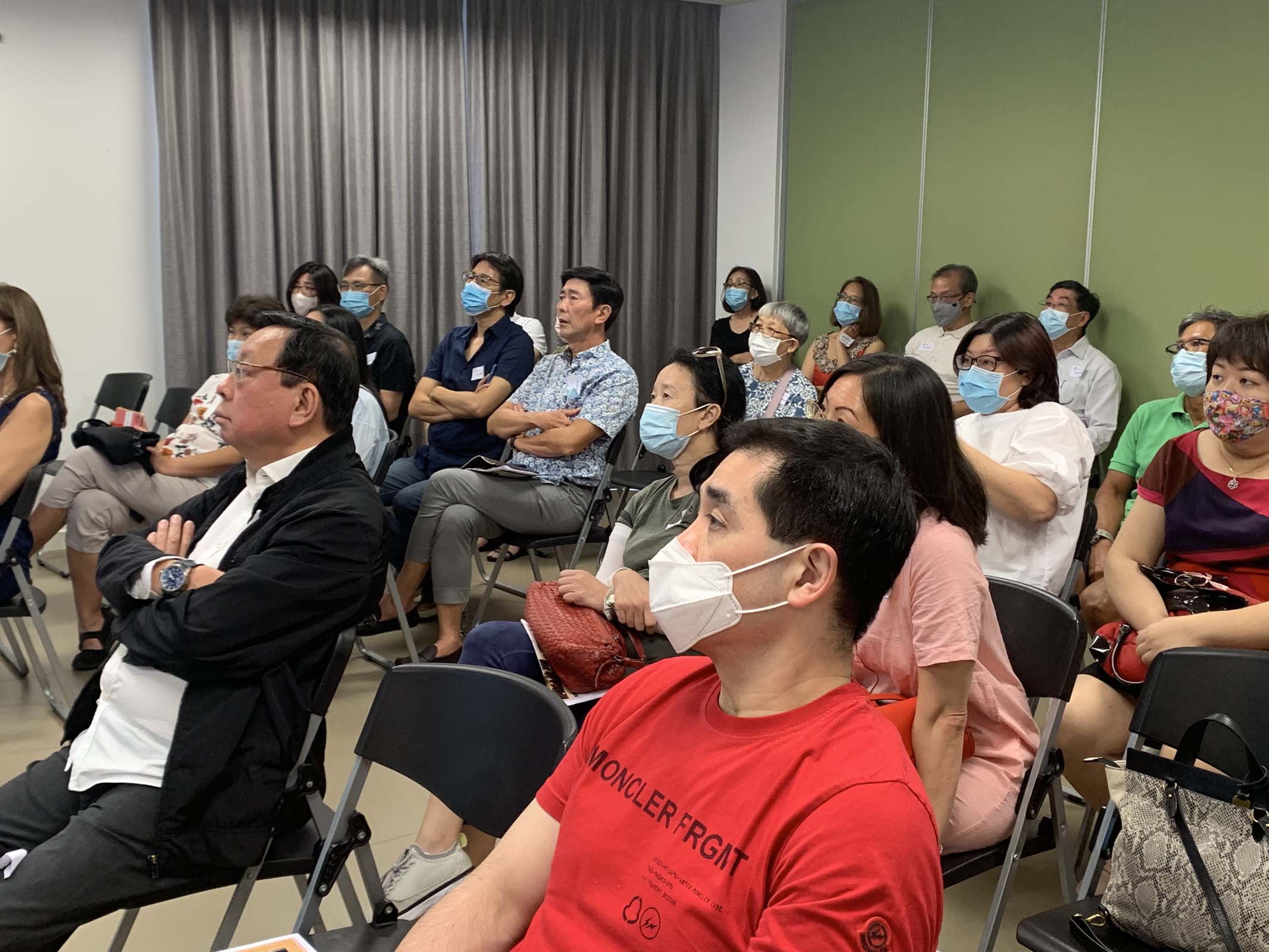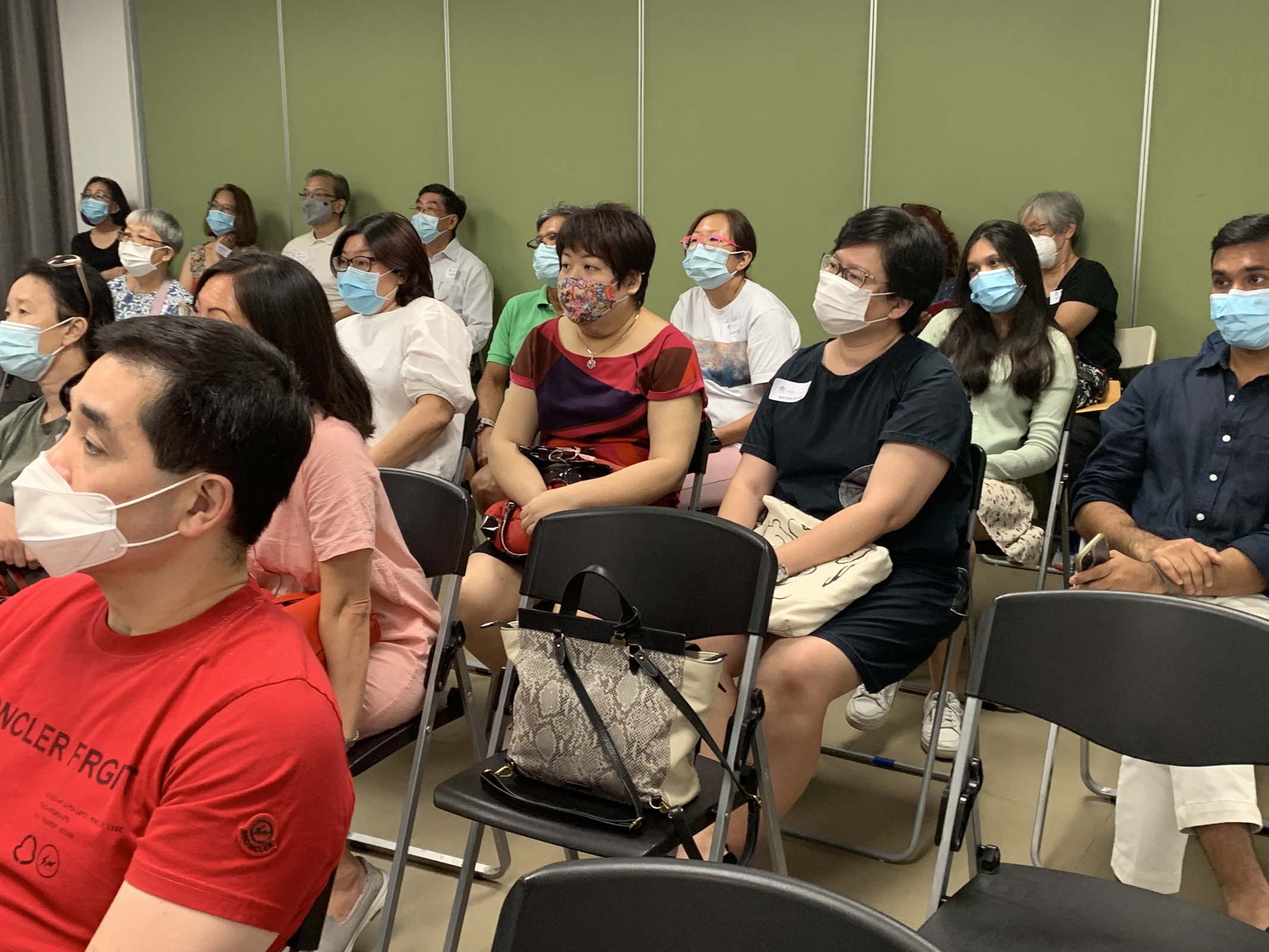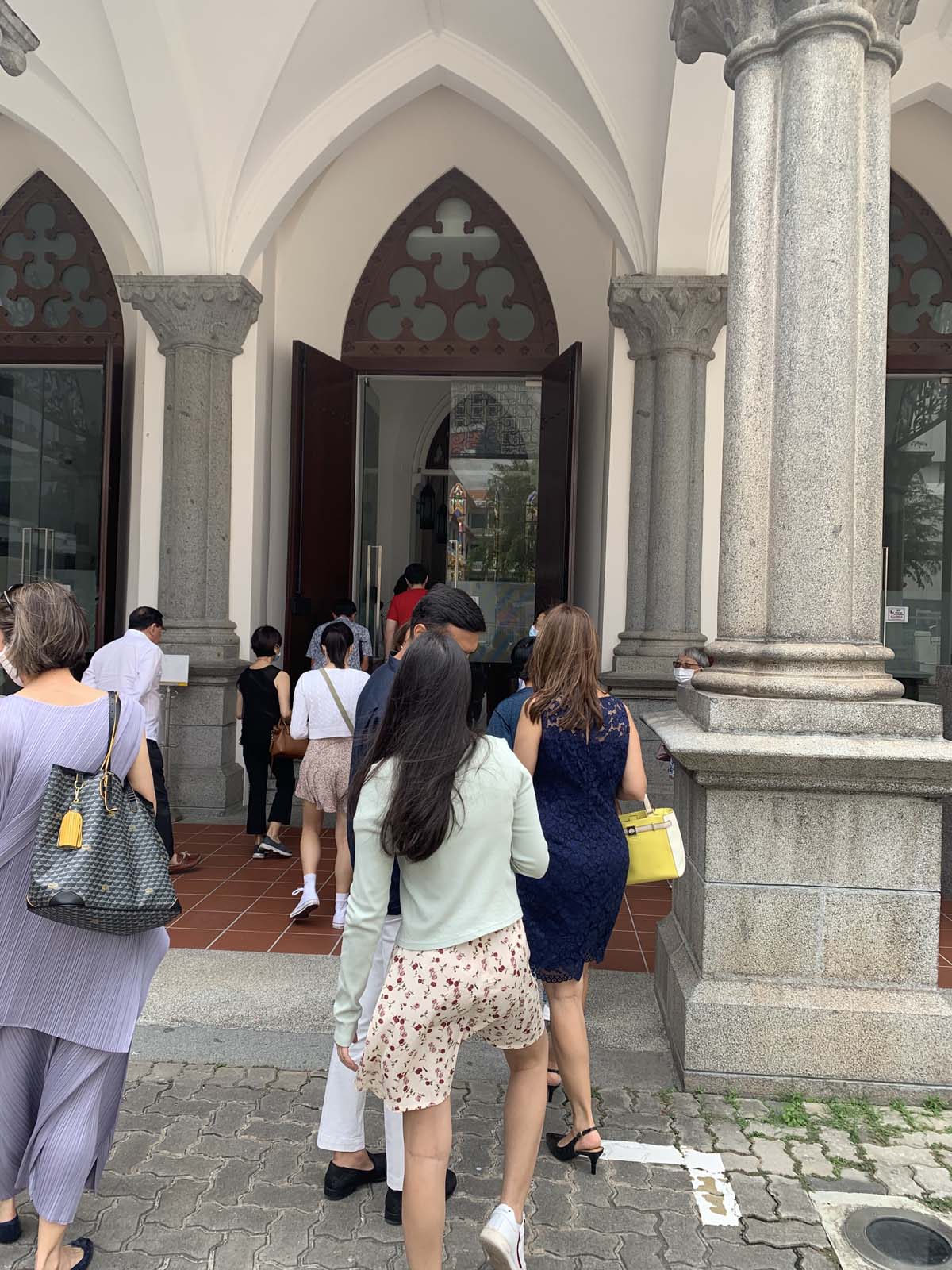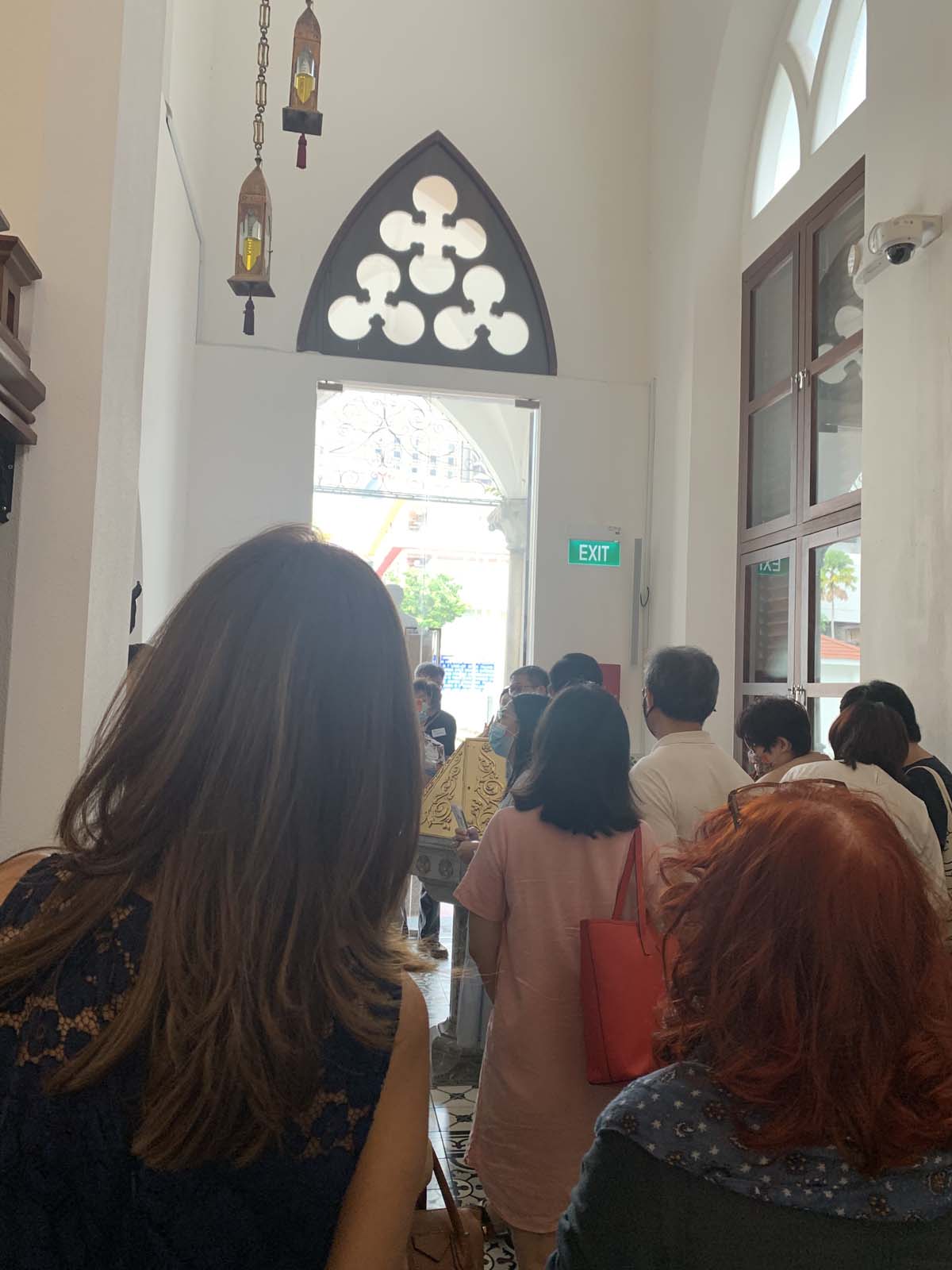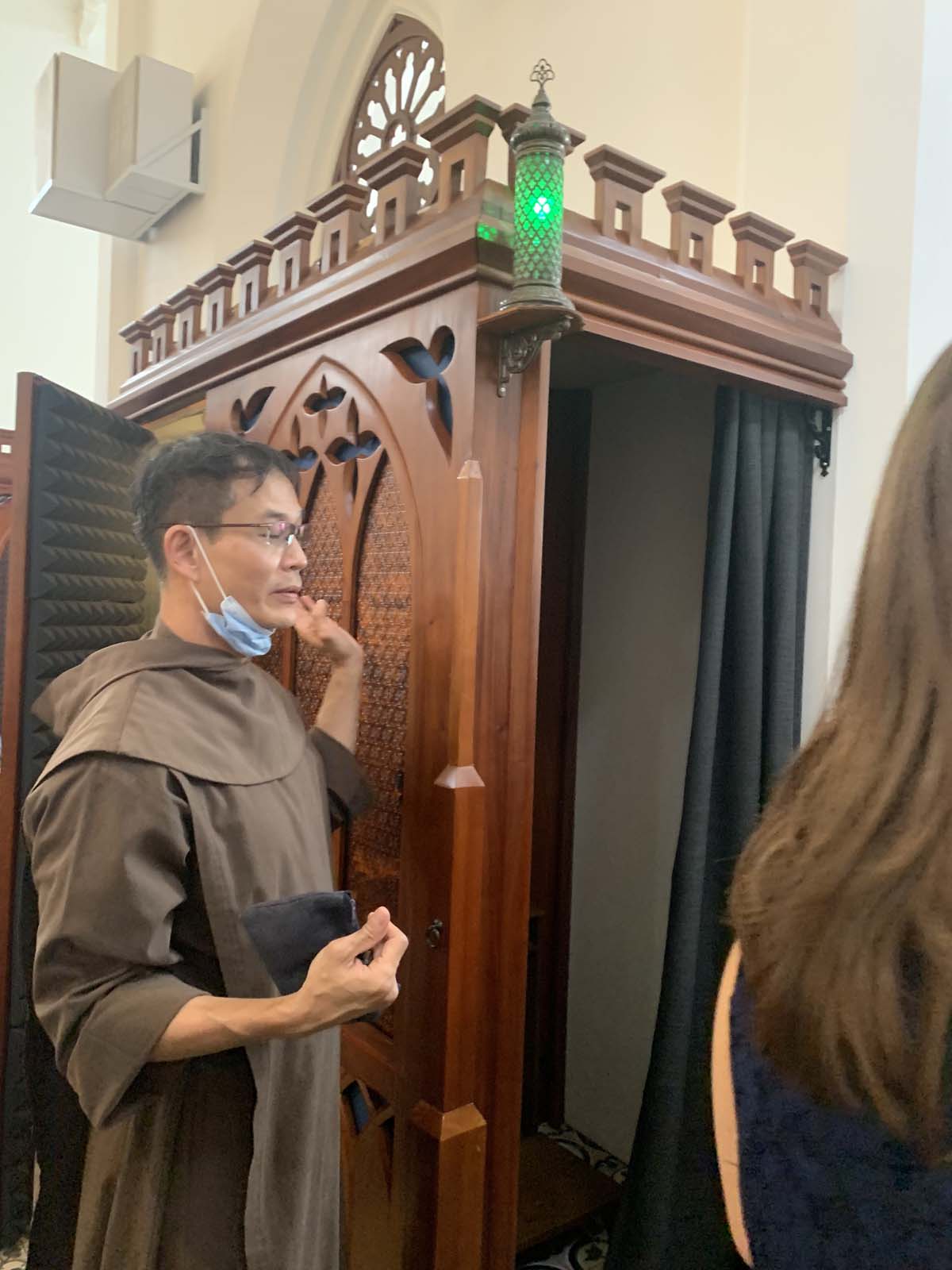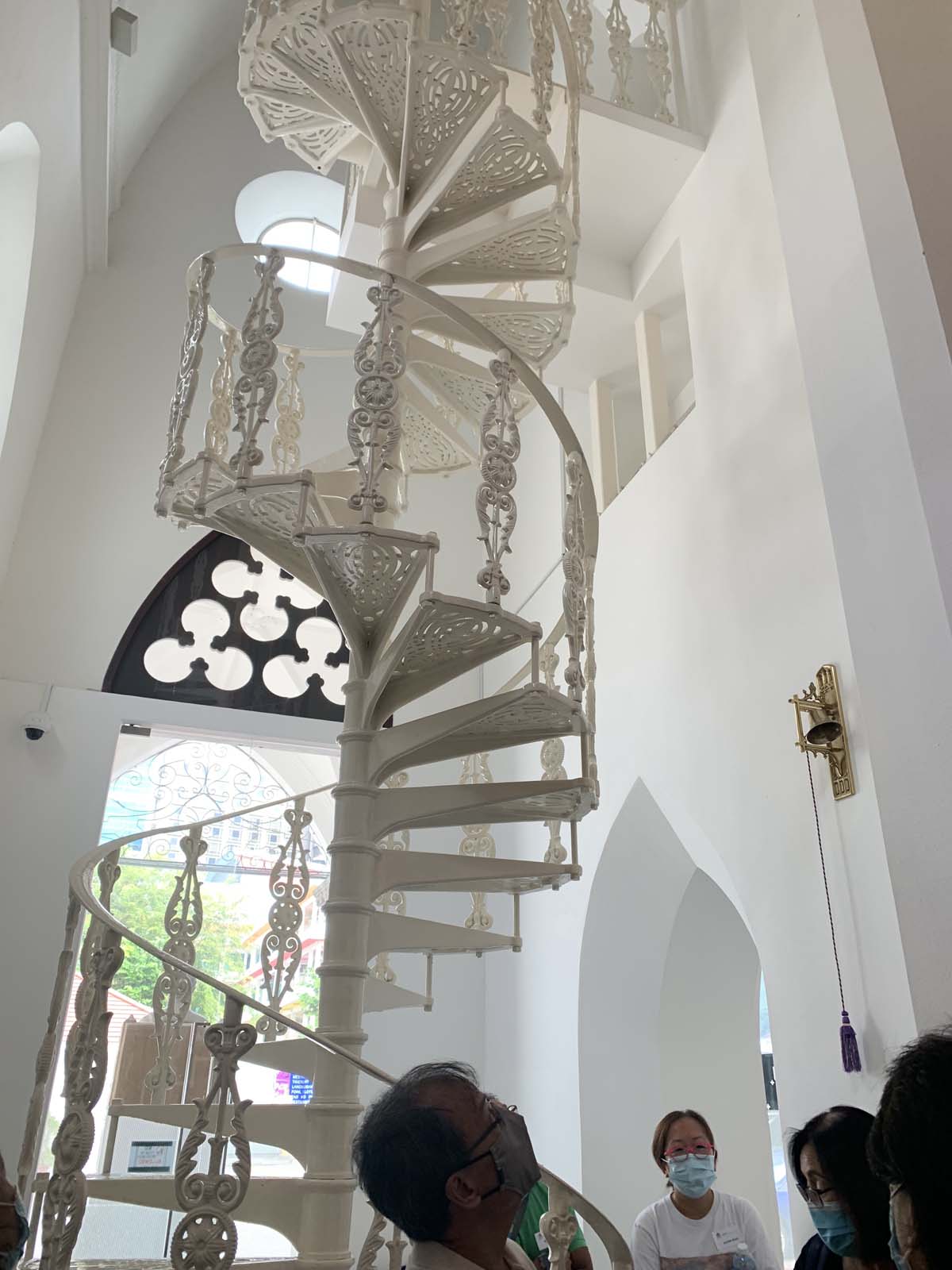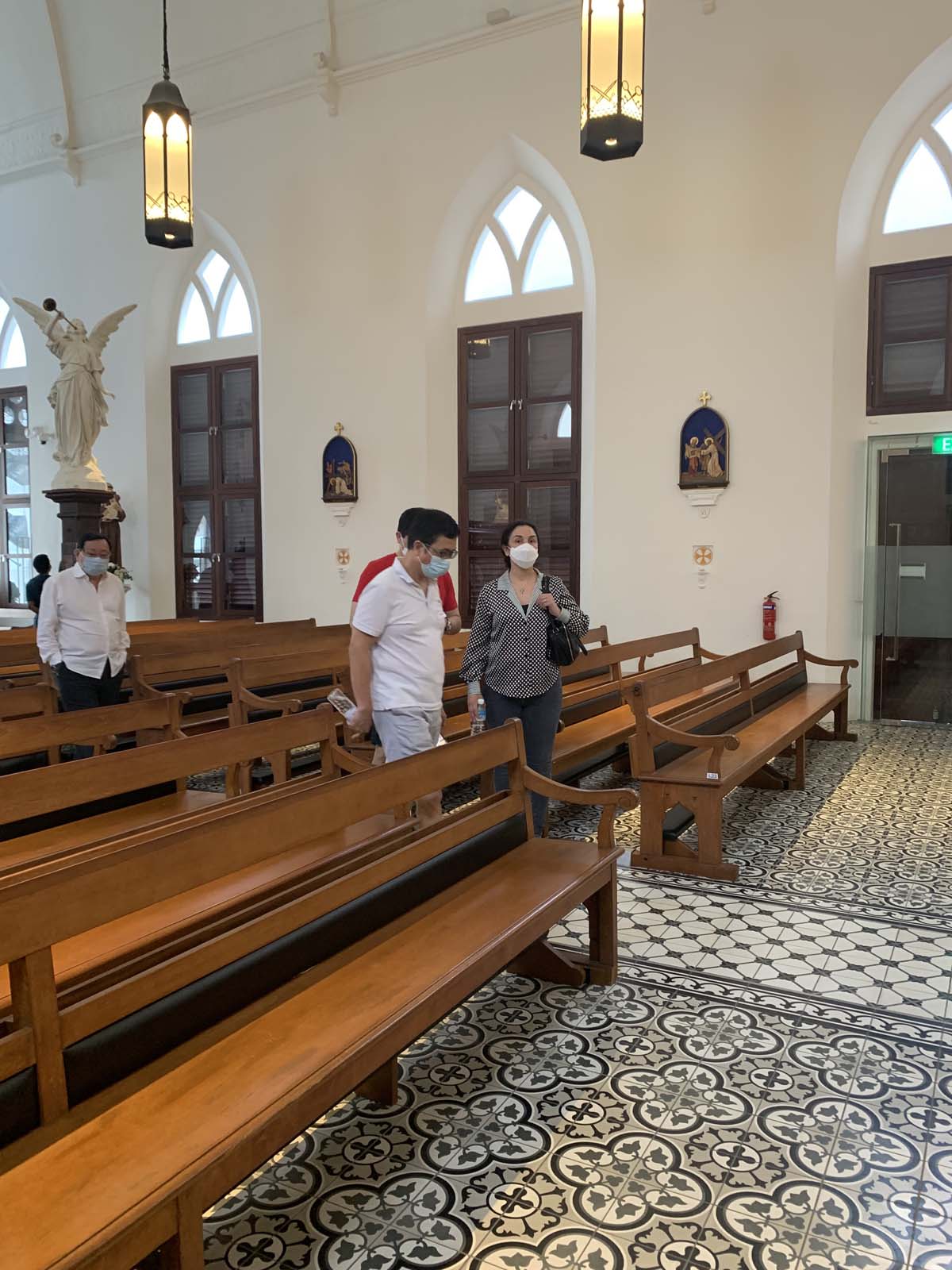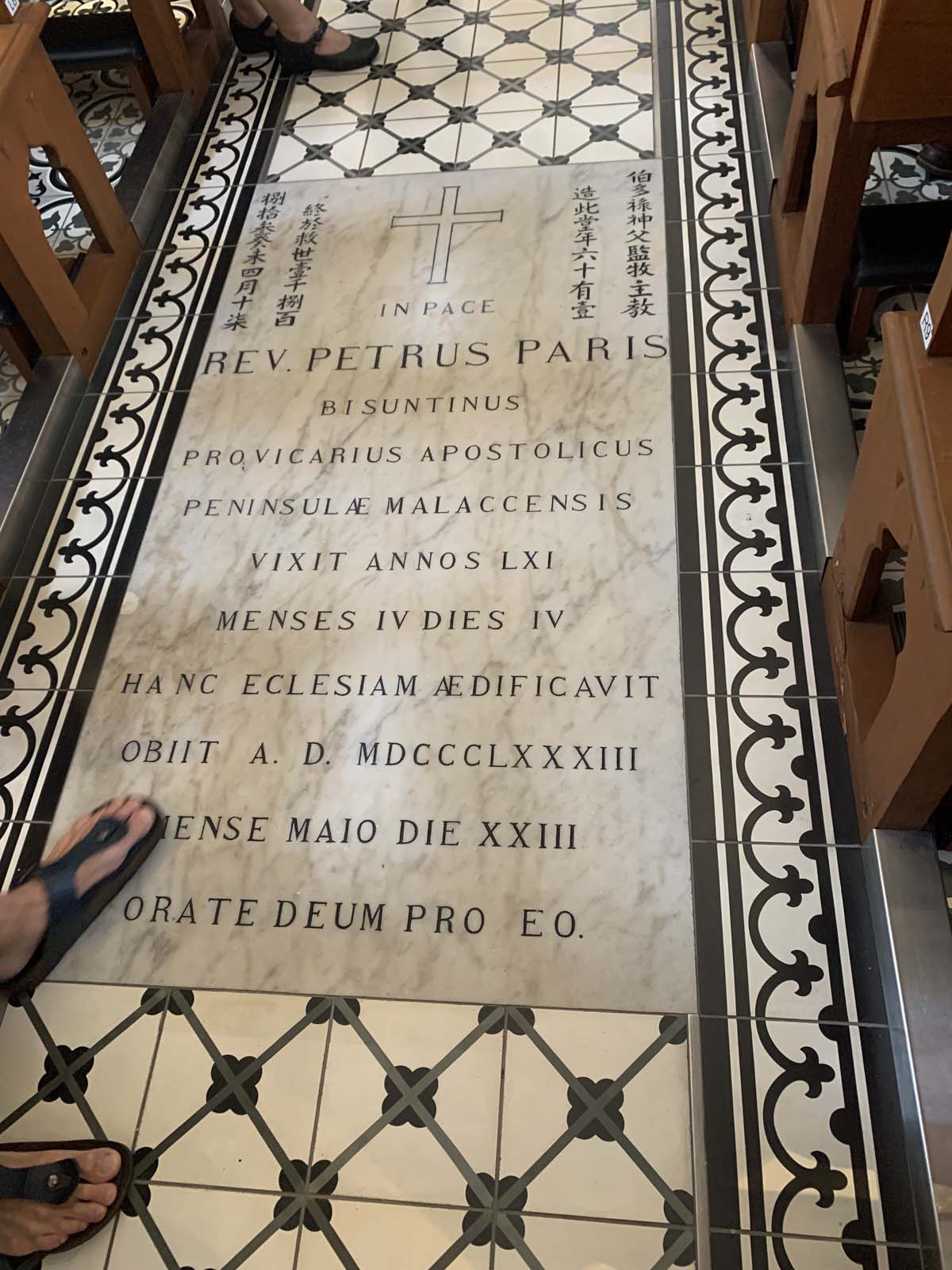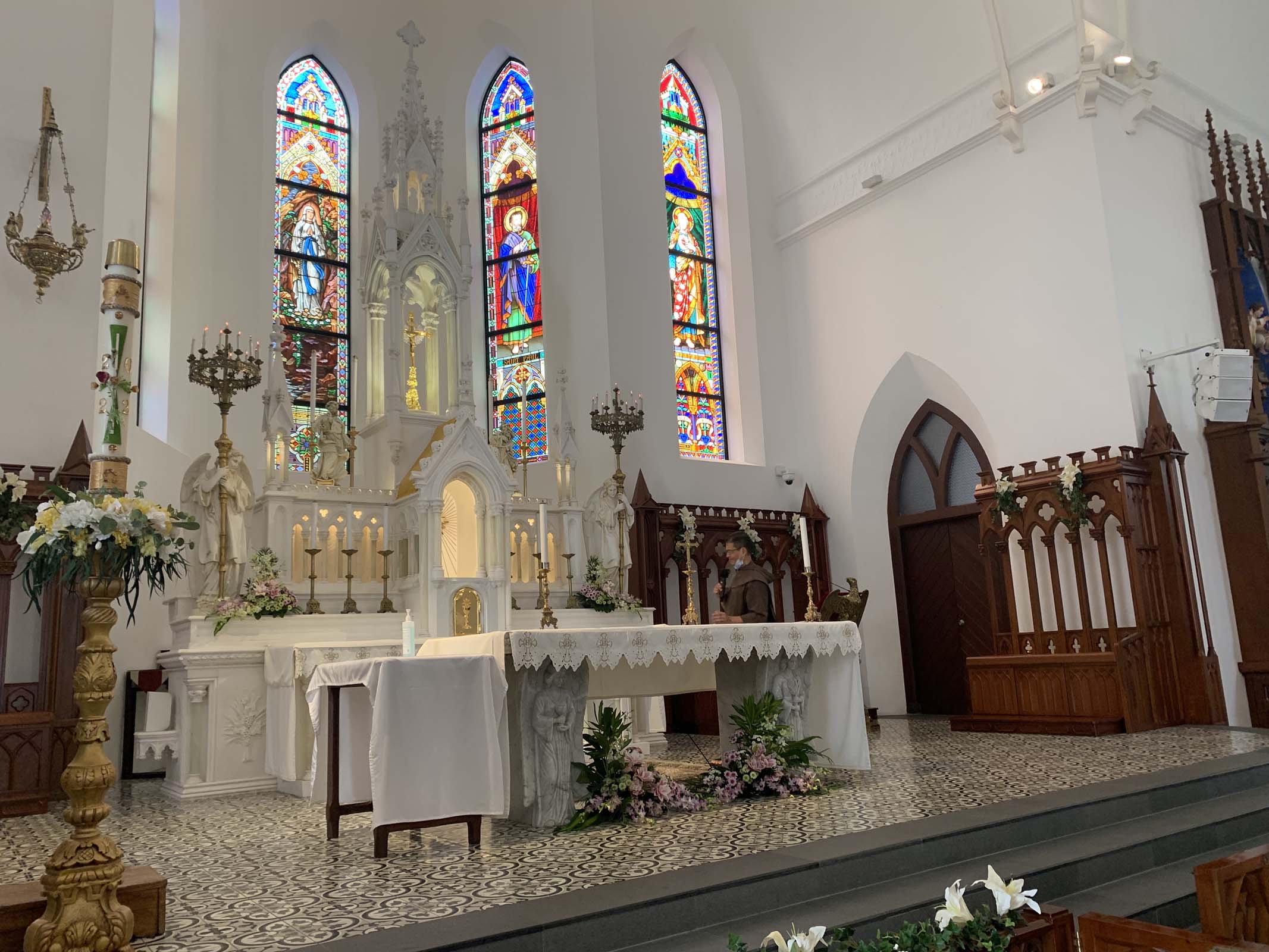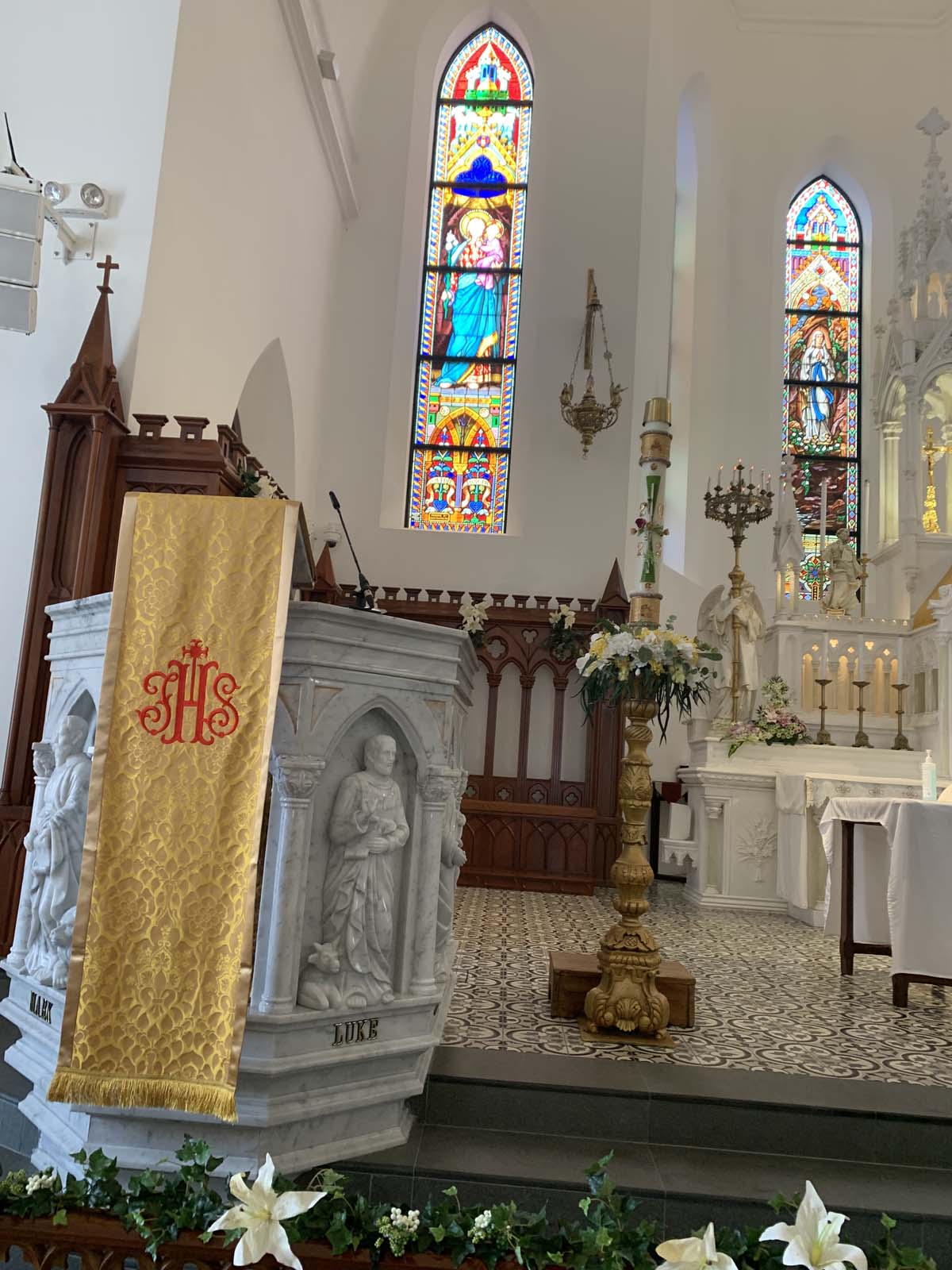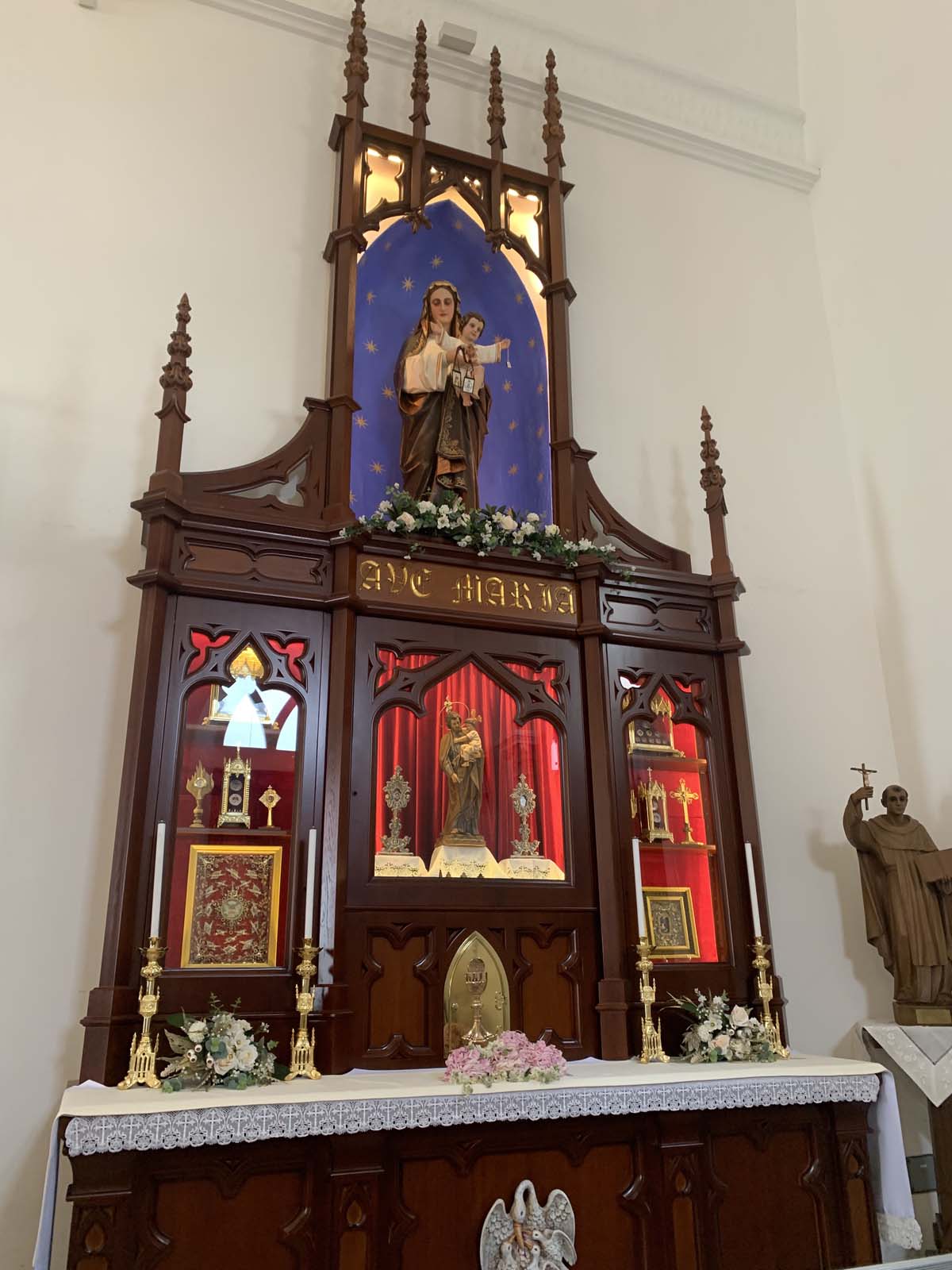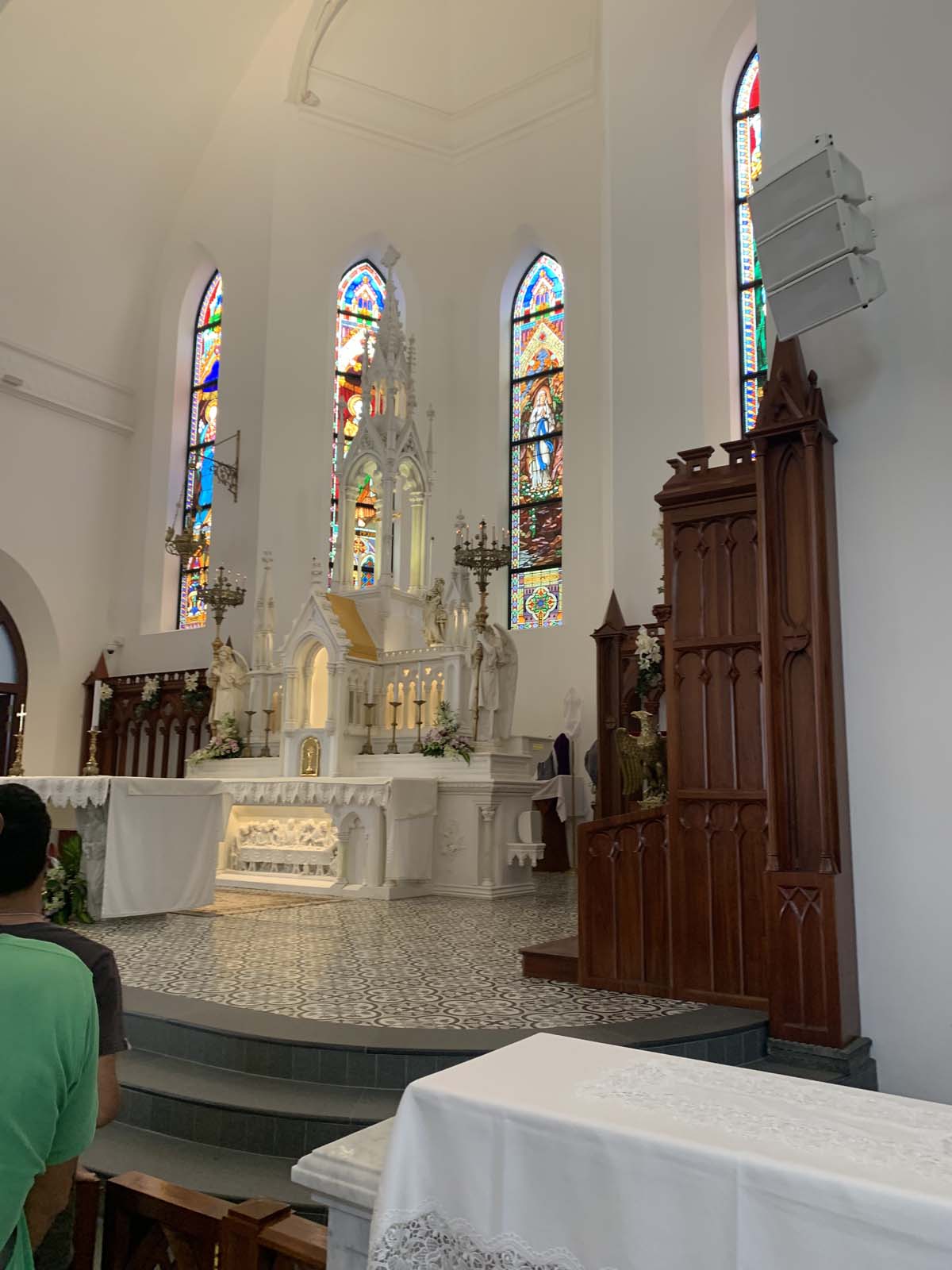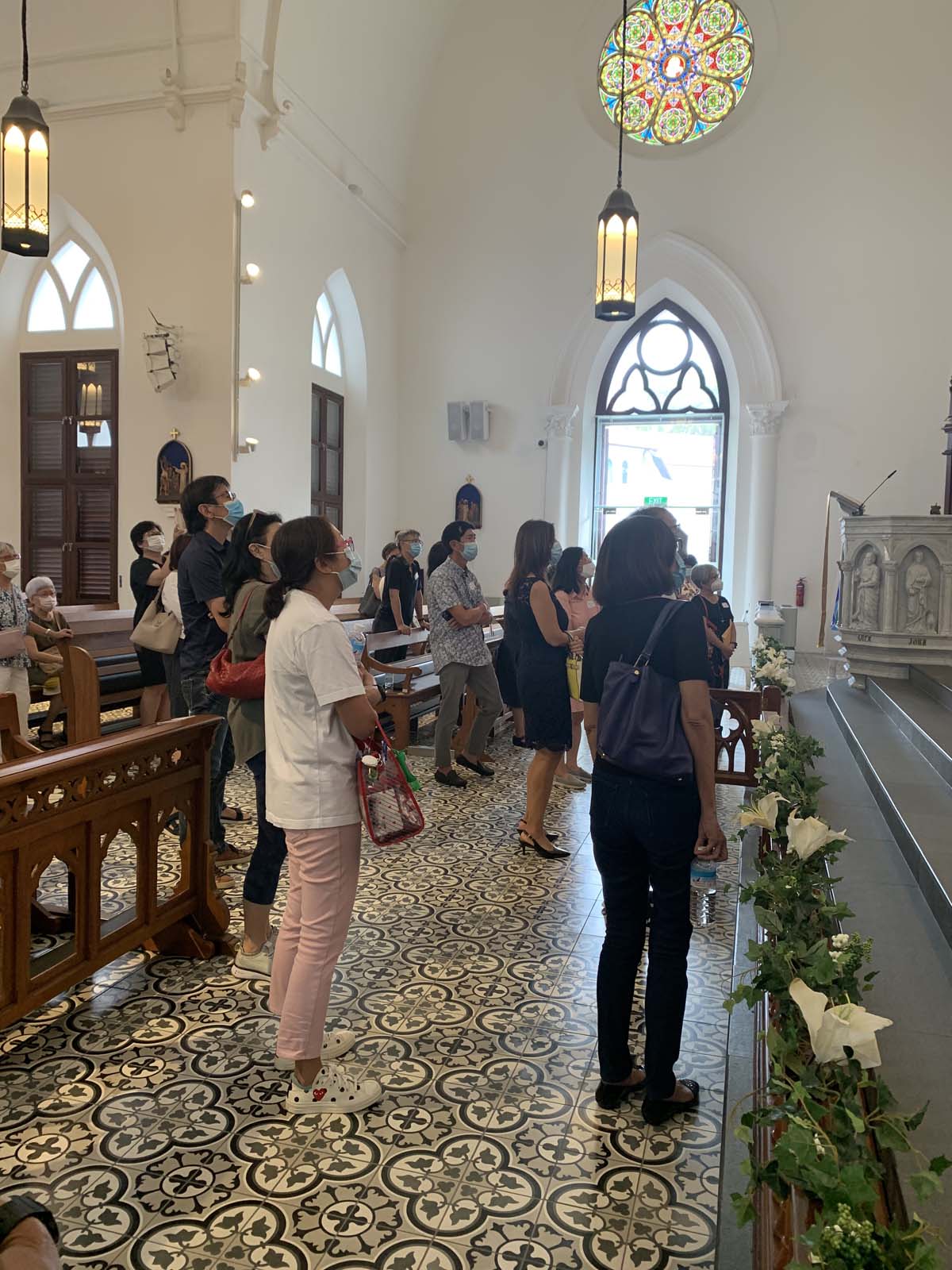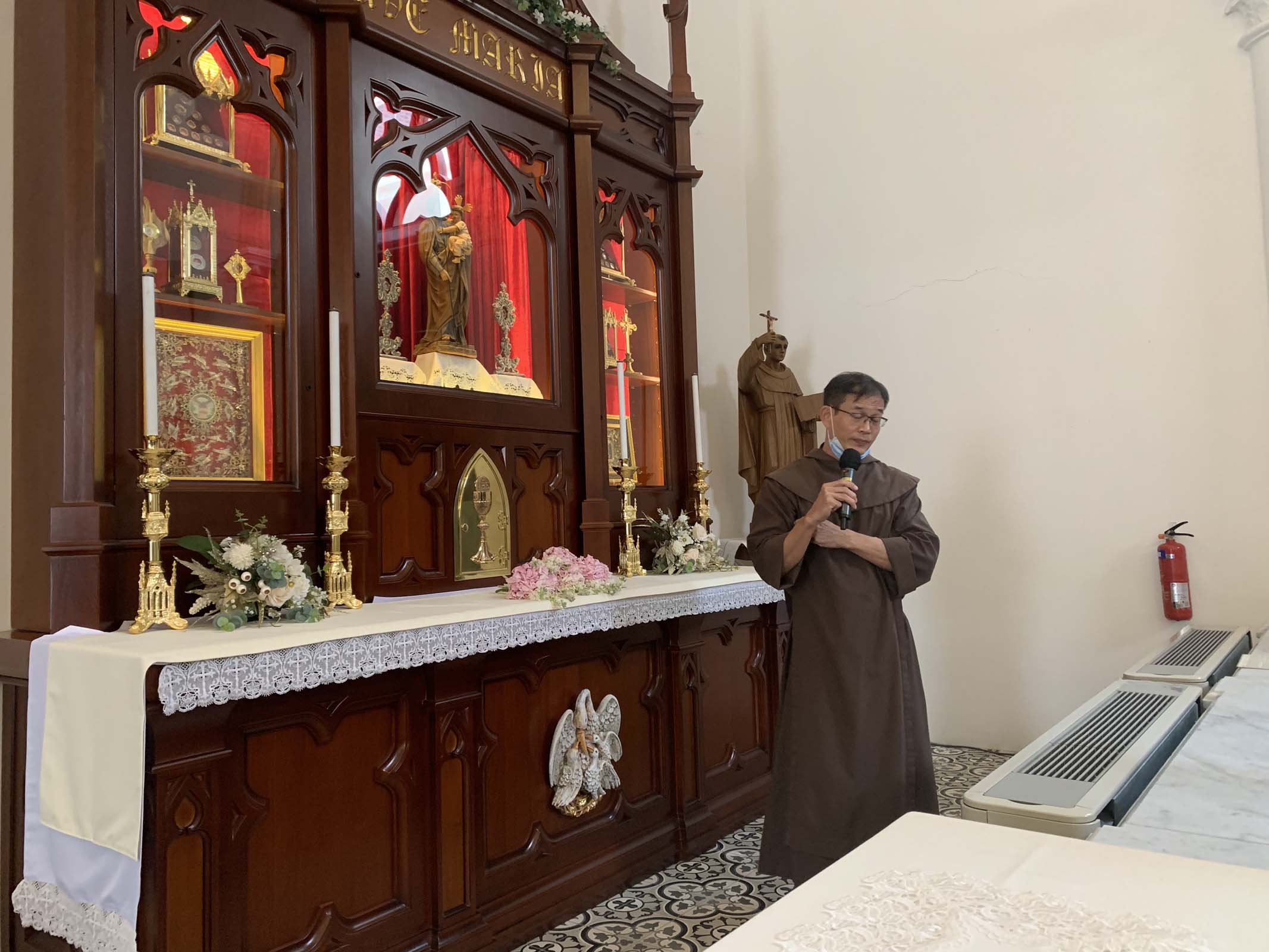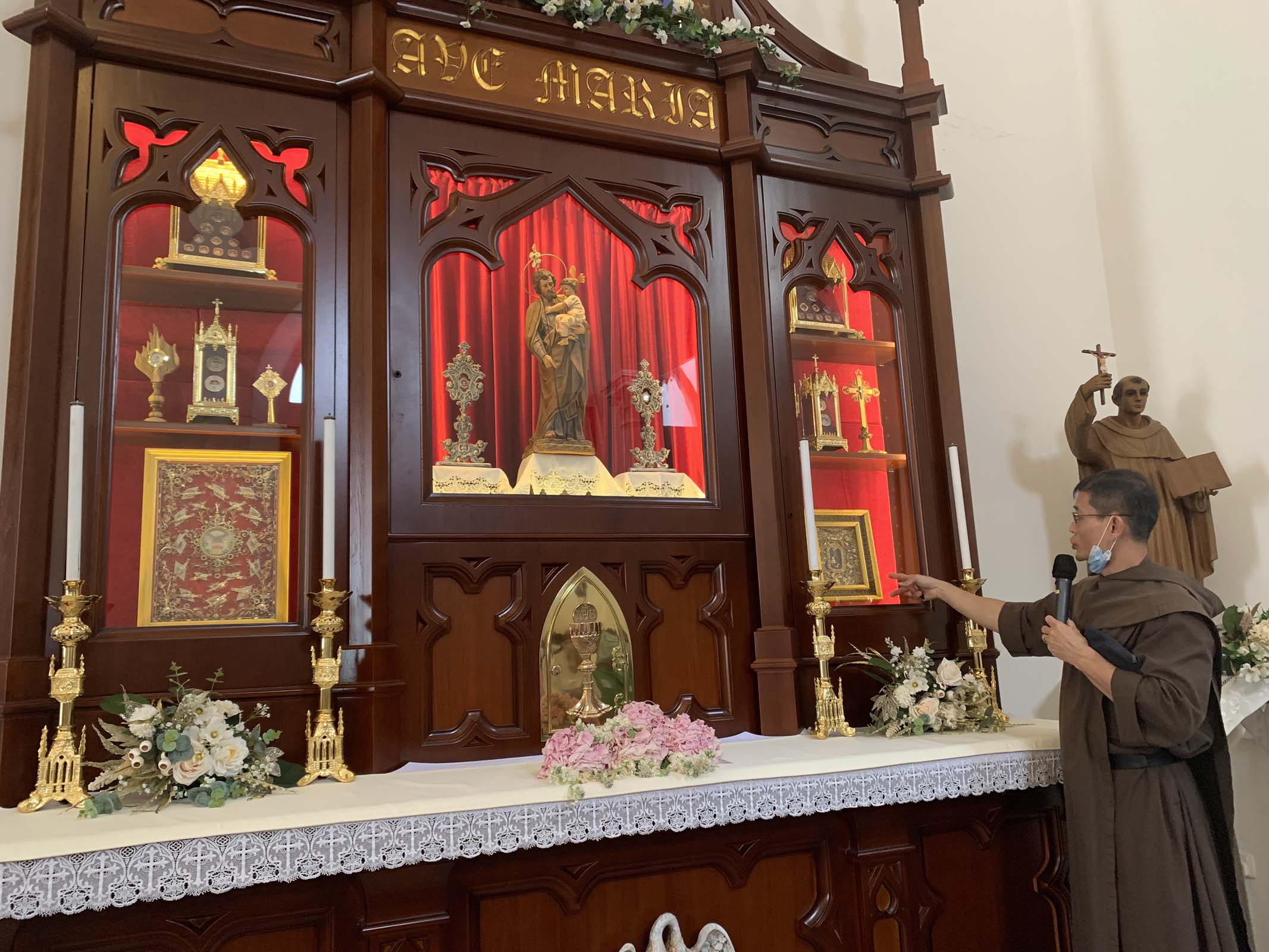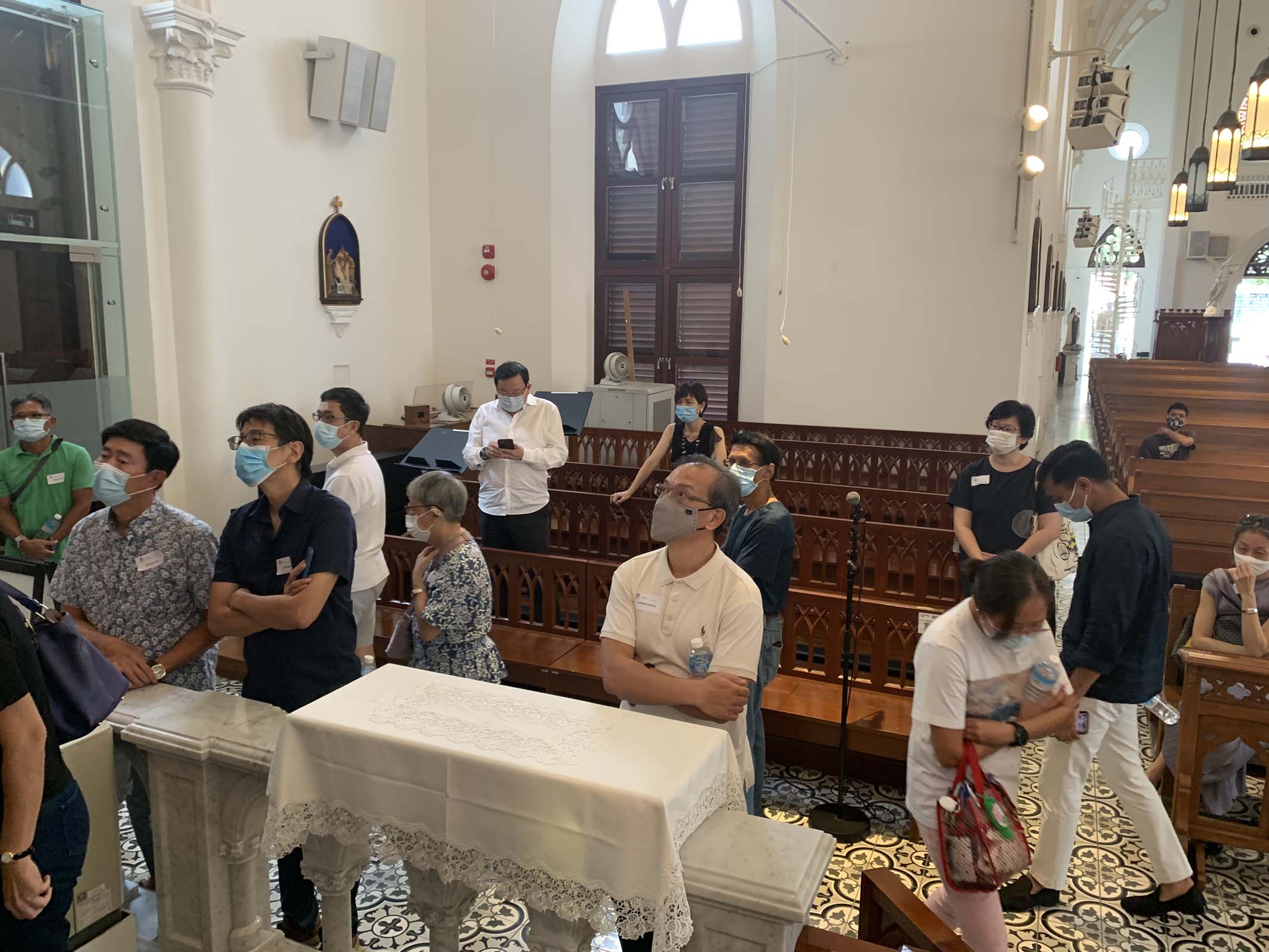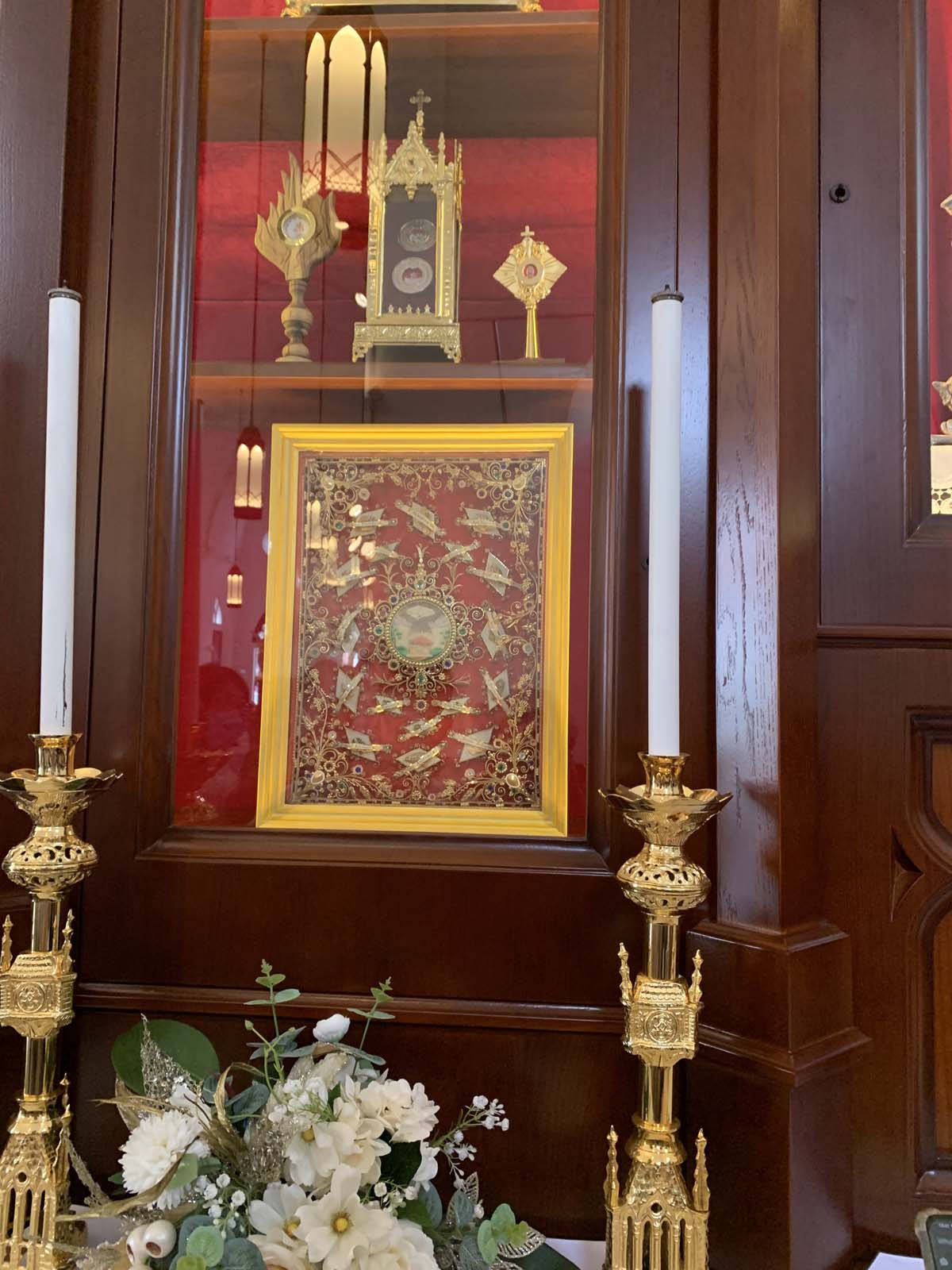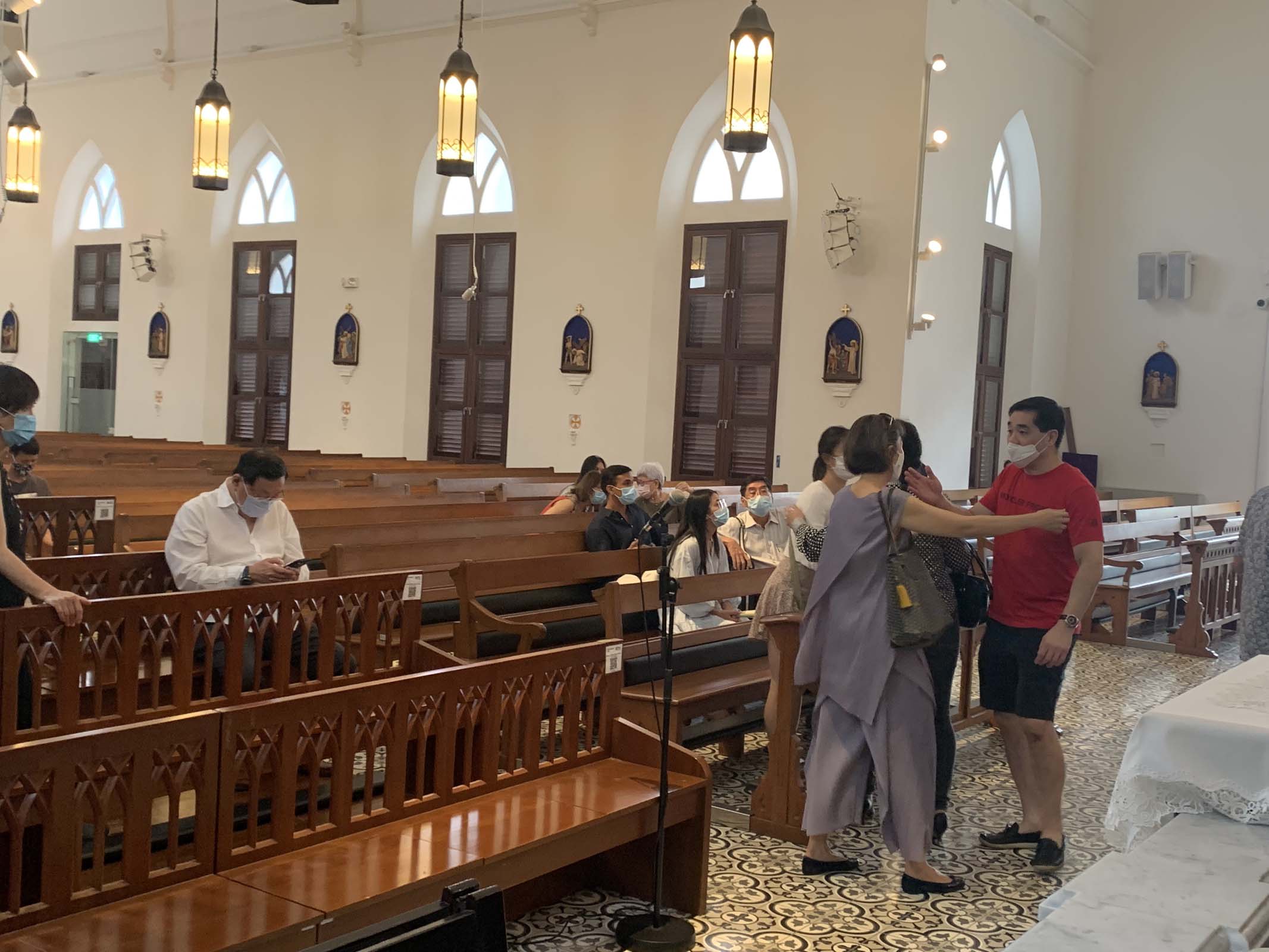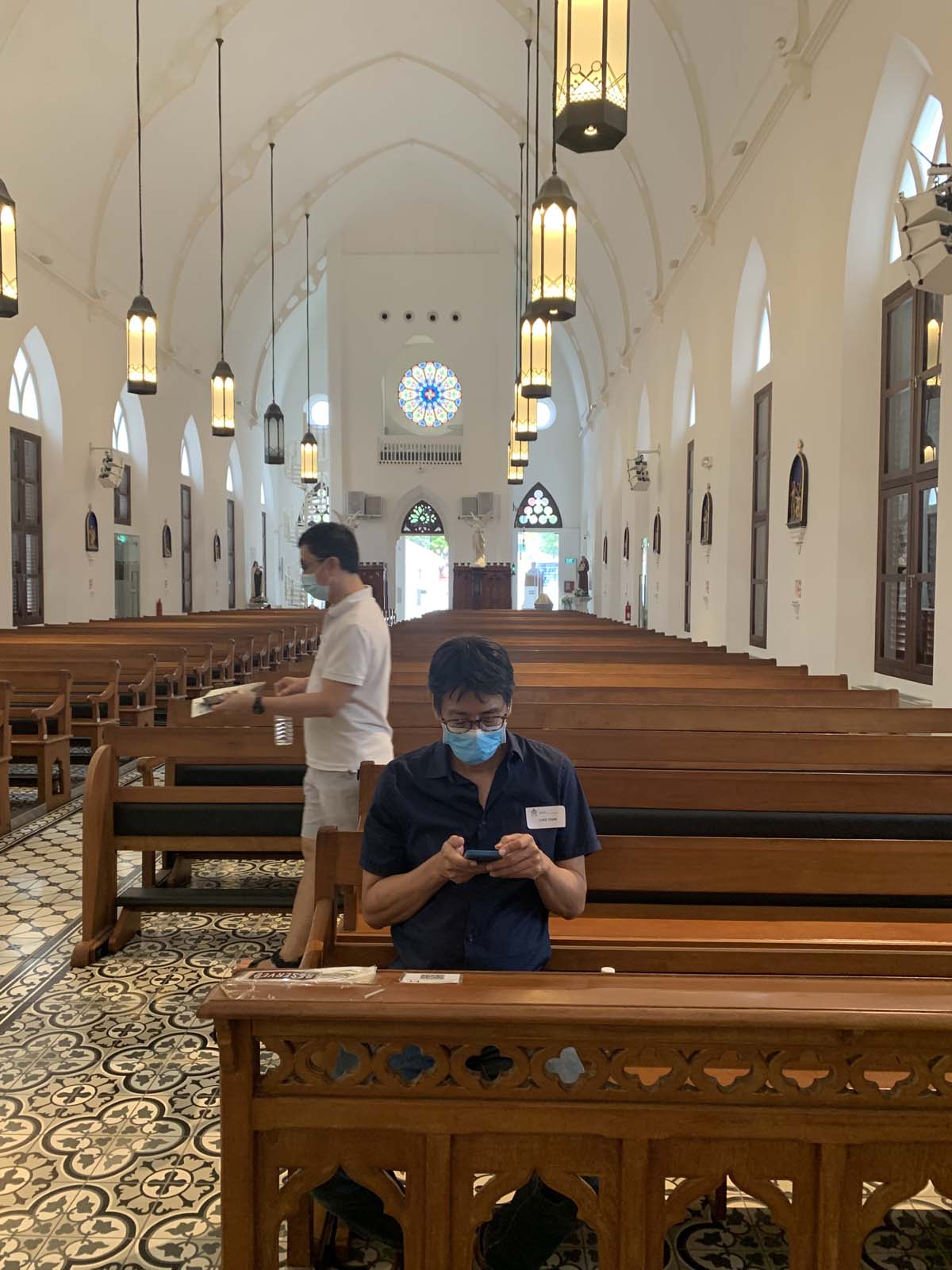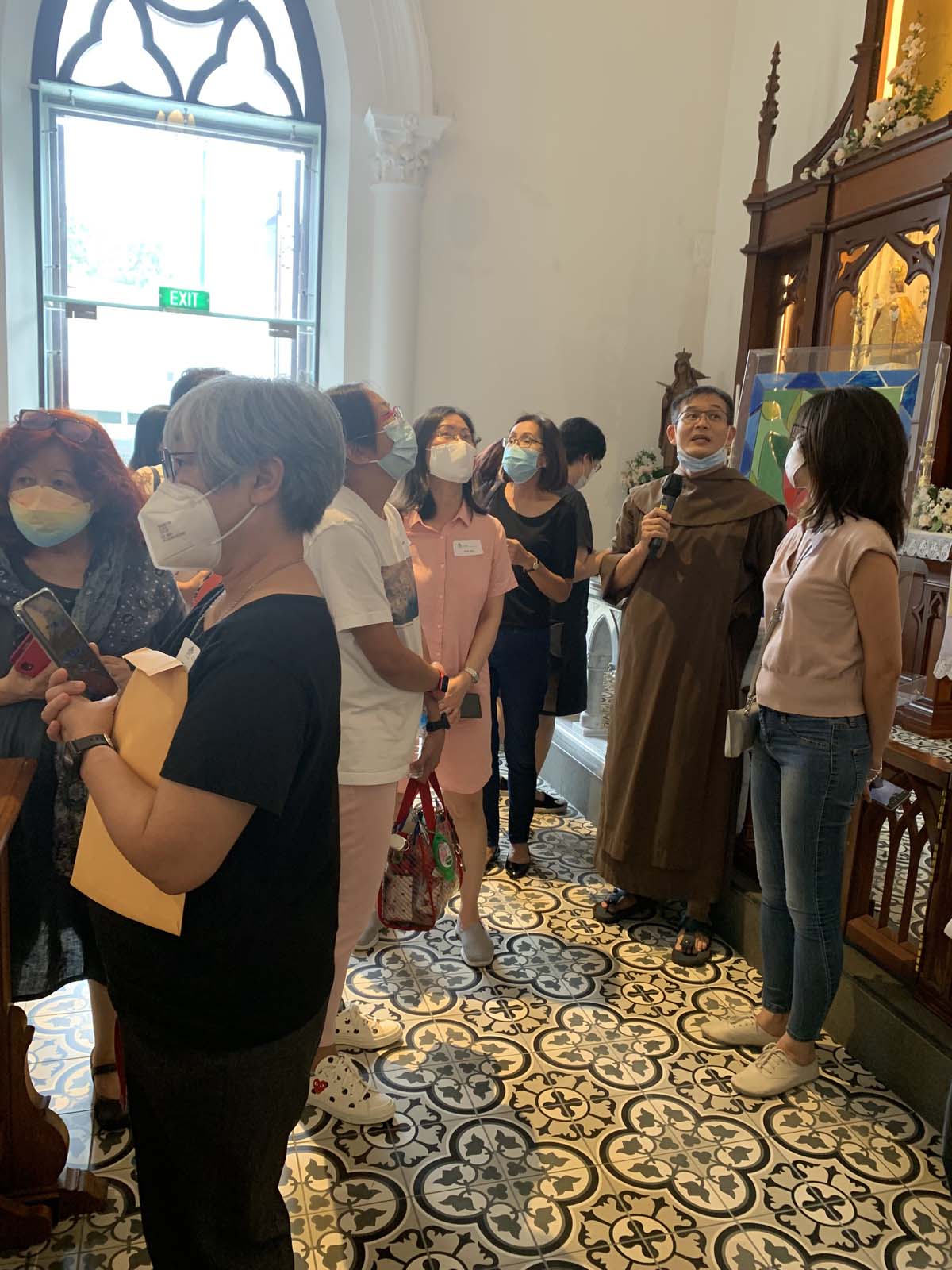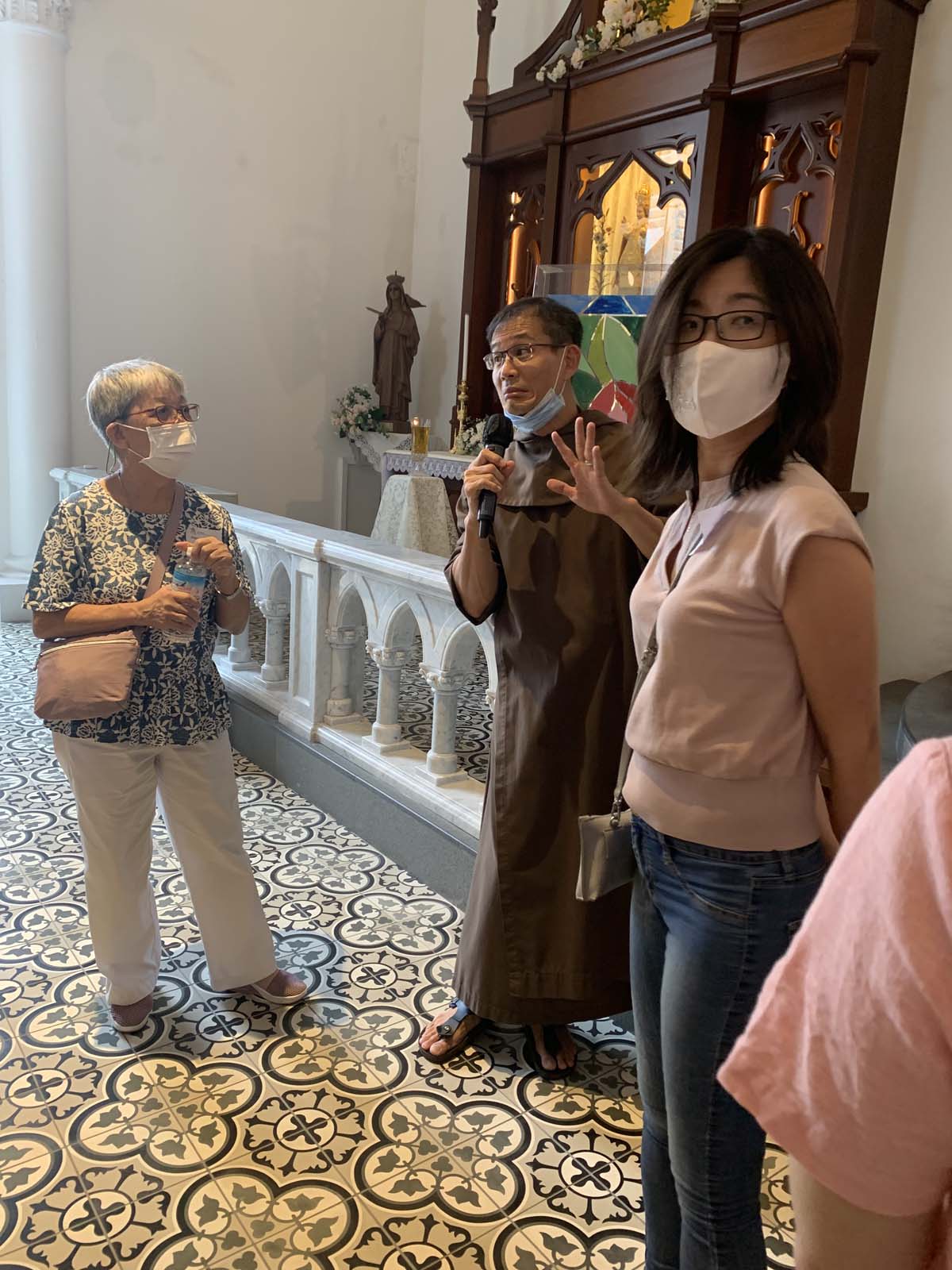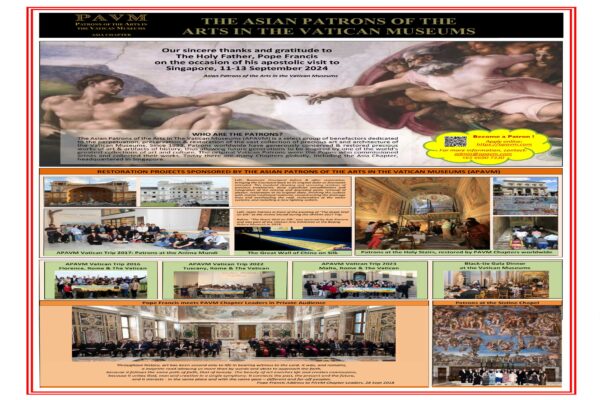A visit to the Church of Saints Peter and Paul in Singapore on 16 May 2022, was well received by the 37 patrons and friends who attended.
The Church of St Peter and Paul was built in 1870 by a French priest, Rev. Fr. Pierre Paris, M.E.P (Paris Foreign Missions Society). It is the second oldest church in Singapore, built 26 years after the Church (now Cathedral) of the Good Shepherd. It has been designated a national monument by the National Heritage Board.
The historical background that led to the building of the church was explained to us by Sister Julia Ong, IJ. She said that in 19th century Singapore, the clergy deemed it expedient to minister to the multicultural faithful in Singapore by grouping them according to their ethnicity and language. Hence the decision to build the Church of Saints Peter and Paul, to cater to the growing number of Chinese Catholics living in town, many of whom were Teochew. The Chinese roots of the church may be seen at the entrance where the words 天主堂 (hanyu pinyin tian zhu tang, which means Catholic Church) are situated under the Triumphal Arches.
The missionary French M.E.P. priests who ministered in Singapore must be commended because of their belief in evangelising through the vernacular instead of French. Thus the formation of the Chinese parish of Saints Peter and Paul, and the building of the Sino-English boys school next to the church. The reason for a bilingual Chinese and English school next to the Chinese parish was because Singapore was ruled by the British then, and English was the language of the government and the law. This school was eventually renamed Catholic High School.
Following Sister Julia’s presentation, parish priest Rev. Father Edward Lim OCD, gave us a talk on Catholic Church liturgy and architecture. Father explained the parts that make up Catholic liturgy and then explained how church architecture and art developed through history to support and enhance Catholic liturgy. Traditional churches with their soaring domes and vaults were designed to inspire awe and reverence in those who enter within its sacred space. In the past when many were illiterate, it was the art within the church (statuary, stained glass, paintings and frescoes) that inspired them and taught them the tenets of the faith.
After the talks which were held in CANA The Catholic Centre, everyone partook in a delicious lunch of Teochew food from the famous Catholic Teochew caterer, Peng Catering. We then walked over to the Church of Saints Peter and Paul which was just next door, for a tour led by Father Edward Lim.
Father Lim showed us the architectural features on the exterior of the Gothic church building like the Triumphal Arches, Chinese words, steeples, belfry and the statues of St Peter and St Paul looking down from alcoves above the arches and also the imposing ones that flank the front entrance.
The many floral motifs on the buildings were also highlighted including the Fleur-de-lys, a nod to the French missionaries.
The layout of the church is in the traditional cruciform shape. The beautiful baptismal font and ambry holding the holy oils used in liturgy are found at the entrance, together with confessionals and scallop shell holy water fonts.
The altar, ambo (where the lector proclaims the Mass readings) and communion rails are all clad in marble. The brass sanctuary lamp used to light the tabernacle is a beautiful work of art in itself. It is lit 24 hours a day to remind the faithful that the tabernacle contains the real presence of Jesus Christ in the form of the Holy Eucharist.
Stepping into the church, one is immediately captivated by the many beautiful stained glass windows, with their kaleidoscopic colours and intricate designs. There are round rose windows as well as tall windows with images of the Virgin Mary, St Peter, St Paul and St Joseph carrying the infant Jesus.
The church also houses a reliquary with many first-class relics of saints. The ornate architecture and many pieces of beautiful art in the Church of Saint Peter and Saint Paul were made possible because of generous benefactors, many of whom were Chinese, their names on plaques outside the church.
As the church building aged, it underwent renovations in which some of its original features were removed or modified. In 2016, an extensive renovation was completed, this time with studied and careful restoration of the church. Many of the original features that were torn down in the past were reinstated including the traditional high altar and altar rail. This restoration received the Urban Redevelopment Authority of Singapore’s Architectural heritage award in 2016.
After visiting the church, Father brought us up to the parish’s heritage centre and museum, where furniture and items used in the church in the past were on display.
All who attended this event remarked that they knew so little about the early history of Singapore’s Catholic Church. Being modern cosmopolitan citizens who could go to any Catholic parish in Singapore to pray, many did not realise that the oldest parishes in the country used to cater to different ethnicities. Our eyes were also opened to the rich symbolism found in Catholic church architecture and art.
APAVM is grateful to Sister Julia, IJ, Janet Lim and the team from CANA The Catholic Centre and especially to Rev. Father Edward Lim OCD, parish priest of Church of Saints Peter and Paul for making this event possible.
